Posts Tagged ‘pet vaccines’
Understanding Pet Vaccinations: Ensuring Your Pet’s Health
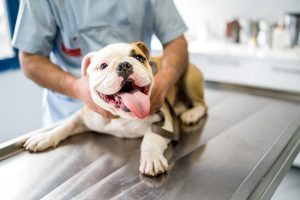 As pet owners, we all want our furry companions to live long, healthy, and happy lives. One of the most crucial aspects of maintaining your pet’s health is ensuring they receive the appropriate vaccinations. At Olsen Veterinary Clinic, we believe in educating pet owners about the importance of vaccinations, the recommended vaccination schedule, and how these preventive measures contribute to your pet’s overall well-being.
As pet owners, we all want our furry companions to live long, healthy, and happy lives. One of the most crucial aspects of maintaining your pet’s health is ensuring they receive the appropriate vaccinations. At Olsen Veterinary Clinic, we believe in educating pet owners about the importance of vaccinations, the recommended vaccination schedule, and how these preventive measures contribute to your pet’s overall well-being.
Why Are Pet Vaccinations Important?
Vaccinations are vital for protecting pets from various infectious diseases, some of which can be life-threatening. These vaccines work by stimulating the immune system to recognize and fight specific pathogens, such as viruses and bacteria, if your pet is exposed to them in the future. Here are some key reasons why vaccinations are essential:
1. Disease Prevention
Vaccines help prevent numerous diseases that can affect pets. For example, canine parvovirus, distemper, and rabies in dogs, and feline leukemia virus and panleukopenia in cats, are all preventable through vaccination.
2. Public Health
Some diseases that affect pets, like rabies, can be transmitted to humans. By vaccinating your pet, you are also protecting yourself, your family, and your community from potential zoonotic diseases.
3. Legal Requirements
In many areas, certain vaccinations, such as rabies, are required by law. Ensuring your pet is up-to-date with their vaccines helps you stay compliant with local regulations.
4. Cost-Effective Health Care
Preventing diseases through vaccination is often far less expensive than treating the diseases once they occur. Regular vaccinations can save you from costly treatments and emergency vet visits.
Recommended Vaccination Schedule
At Olsen Veterinary Clinic, we follow a vaccination schedule that aligns with the guidelines set by veterinary health authorities. Here is a general outline of the recommended vaccination schedule for dogs and cats:
For Puppies and Dogs:
- 6-8 weeks:
- Distemper
- Parvovirus
- Adenovirus (Hepatitis)
- Parainfluenza
- 10-12 weeks:
- Booster for Distemper, Parvovirus, Adenovirus, and Parainfluenza
- Bordetella (Kennel Cough)
- 14-16 weeks:
- Booster for Distemper, Parvovirus, Adenovirus, and Parainfluenza
- Rabies
- 1 year and annually thereafter:
- Annual boosters for Distemper, Parvovirus, Adenovirus, Parainfluenza, and Rabies
- Optional: Lyme disease, Leptospirosis, and Influenza based on your dog’s risk factors
For Kittens and Cats:
- 6-8 weeks:
- Feline Viral Rhinotracheitis (FVR)
- Calicivirus (FCV)
- Panleukopenia (FPV)
- 10-12 weeks:
- Booster for FVR, FCV, and FPV
- Feline Leukemia Virus (FeLV)
- 14-16 weeks:
- Booster for FVR, FCV, FPV, and FeLV
- Rabies
- 1 year and annually thereafter:
- Annual boosters for FVR, FCV, FPV, FeLV, and Rabies
How Vaccinations Contribute to Your Pet’s Well-Being
Regular vaccinations play a crucial role in maintaining your pet’s overall health and well-being. Here’s how:
1. Boosts Immunity
Vaccines strengthen your pet’s immune system, making them more capable of fighting off infections and reducing the severity of illnesses if they do occur.
2. Reduces Disease Spread
By vaccinating your pets, you are helping to control the spread of contagious diseases within the pet population. This is particularly important in communal settings like parks, boarding facilities, and grooming salons.
3. Improves Quality of Life
Healthy pets are happy pets. Vaccinations protect against debilitating diseases that can significantly reduce your pet’s quality of life, ensuring they stay active and vibrant.
4. Longevity
Preventive care, including regular vaccinations, has been proven to extend the lifespan of pets. By safeguarding them against diseases, you are giving your pet the best chance at a long, healthy life.
At Olsen Veterinary Clinic, we are committed to providing the highest standard of care for your pets. Vaccinations are a cornerstone of preventive health care, and we encourage all pet owners to adhere to the recommended vaccination schedules. By doing so, you are not only protecting your pet but also contributing to the overall health of the animal community.
If you have any questions about your pet’s vaccination needs or would like to schedule an appointment, please contact us at Olsen Veterinary Clinic. Together, we can ensure your pet’s health and happiness for years to come.
New Puppy Checklist: Everything You Need Before Welcoming Your New Furry Friend into Your Life
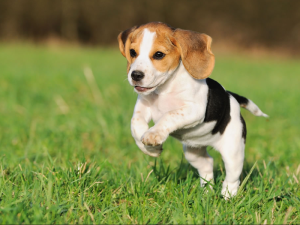 Bringing a new puppy into your home is an exciting time but requires some preparation for your home. Puppies require a lot of attention and care, so this checklist will be beneficial if you are unsure where to start with the basics for your new puppy.
Bringing a new puppy into your home is an exciting time but requires some preparation for your home. Puppies require a lot of attention and care, so this checklist will be beneficial if you are unsure where to start with the basics for your new puppy.
Some companies have created puppy starter kits. For example, this box made by Chewy has a set of toys, treats, and potty-training materials to help you with your new puppy. All top-rated items, new puppy owners are sure to appreciate it. It also makes a great gift. It can be found here.
Beyond toys, treats, and potty-training materials, puppies need food and water bowls. There are a lot of different options, but one that is slightly lifted is easier for your puppy to eat from. If you get one with walls, it is more likely your floor will stay cleaner.
Also necessary is a bed for your pet. An elevated bed is good for keeping your dog lifted and is helpful for teaching different cues. Other more traditional options are great too, especially as your pups are growing quickly.
Some owners choose to crate their puppies, and there are a lot of options but must be replaced as dogs grow. Crates help dogs have a safe place, especially as they adjust to a new space and lifestyle.
Also important for your new puppy is a leash. There are many kinds of leashes, with different uses. It will most likely be trial and error to find what works for you and your puppy, so be prepared for a trial period.
Puppies require hygiene efforts. This includes toothbrushes, toothpaste, nail clippers, brushes, and bathing supplies. Providing exposure to these items while young makes it less scary for adult dogs and easier for their owners.
Lastly, a collar is a great way to express your and your pet’s personality. Be prepared for your new pup with a collar and tag to provide some protection and peace of mind.
The last step for a new puppy is establishing an appointment with your veterinarian to get started on vaccinations and discuss your new dog’s life! Feel free to contact Dr. Olsen of Olsen Veterinary Clinic at 618-656-5868 to set up an appointment or discuss any questions!
CBD For Your Dog: What You Need To Know
 CBD can work wonders for dogs in oils or dog treats. CBD can provide the same benefits for dogs as medical marijuana for humans who experience seizures, extreme pain, anxiety, and cancer. CBD is not what you may traditionally view as weed. CBD is not psychoactive, unlike its more famous counterpart, THC (tetrahydrocannabinol). CBD is one of over 80 different chemical compounds called “cannabinoids” derived from the marijuana plant. Instead, CBD shares important metabolic pathways with a class of drugs called NSAIDs (non-steroidal anti-inflammatory drugs) like ibuprofen and Rimadyl. These pathways control many processes in the body, from inflammatory responses to blood clotting. Never give dogs straight marijuana or any product containing THC, the primary psychoactive component of marijuana. However, CBD-based products can substantially improve your dog’s quality of life when used in conjunction with other therapies.
CBD can work wonders for dogs in oils or dog treats. CBD can provide the same benefits for dogs as medical marijuana for humans who experience seizures, extreme pain, anxiety, and cancer. CBD is not what you may traditionally view as weed. CBD is not psychoactive, unlike its more famous counterpart, THC (tetrahydrocannabinol). CBD is one of over 80 different chemical compounds called “cannabinoids” derived from the marijuana plant. Instead, CBD shares important metabolic pathways with a class of drugs called NSAIDs (non-steroidal anti-inflammatory drugs) like ibuprofen and Rimadyl. These pathways control many processes in the body, from inflammatory responses to blood clotting. Never give dogs straight marijuana or any product containing THC, the primary psychoactive component of marijuana. However, CBD-based products can substantially improve your dog’s quality of life when used in conjunction with other therapies.
CBD can help with many ailments your dog may experience such as pain management, arthritis, anxiety, seizures, and even cancer. Because CBD shares the same metabolic pathways as anti-inflammatory drugs, it can help with inflammatory conditions. Anything that ends in “-itis” is an inflammatory condition. This includes osteoarthritis (arthritis for short). 25% of dogs will be diagnosed with arthritis in their lifetime. By some estimates, as many as 60% of dogs exhibit some degree of the disease. CBD can provide relief for dogs that may be experiencing pain.
With any treatment, there are potential risks. Overall, CBD itself seems to be incredibly safe for both dogs and cats. However, it has been found that when given at the recommended doses, CBD does cause an elevation in an important liver value on bloodwork called alkaline phosphatase (ALP). It is too early in its research to see if the elevation in this liver value has any medical significance. It could signify that CBD causes irritation or damage to the liver. Alternatively, it could be an artificial finding in which the drug interferes with the way the lab measures the liver value. It is simply too early to know for sure. There are anecdotal reports of dogs becoming somewhat sleepy or sedate if they receive a large dose of CBD, but these effects resolve independently with time. Moreover, CBD doesn’t appear to have any drug interactions when given to a dog on an anti-inflammatory drug like Rimadyl. However, there is a theoretical risk of drug interaction, as with any other medication, so it is essential to consult with your veterinarian before treating your dog with CBD.
CBD can be administered in topical treatments; however, it is most often administered orally to dogs. The correct dosage is imperative. Studies on using CBD for dogs with arthritis or seizures generally use a dose between 2-8 mg/kg, with most papers erring on the lower side of that estimate. This is about 1-2 milligrams per pound of body weight, twice daily. This dosage has been found to be safe and effective for use with arthritis and seizures. Additional research is needed to evaluate the differences in CBD dosages for other conditions.
CBD can provide benefits for your dog that may be experiencing pain or anxiety. However, the correct dosage is imperative. If you have any questions, feel free to contact Dr. Olsen at Olsen Veterinary Clinic at 618-656-5868.
Dr. Olsen’s Breed Spotlight: The Irish Wolfhound
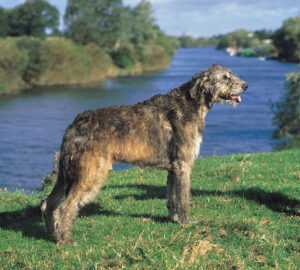 For this next breed spotlight, I will be introducing you to the Irish wolfhound, likely for the first time. This dog is calm, dignified, and the tallest breed of dog (sorry Great Danes). Early ancestors of Irish wolfhounds were fearless, big-game hunters who could dispatch a wolf in single combat. Today, they are the most serene and agreeable of companions.
For this next breed spotlight, I will be introducing you to the Irish wolfhound, likely for the first time. This dog is calm, dignified, and the tallest breed of dog (sorry Great Danes). Early ancestors of Irish wolfhounds were fearless, big-game hunters who could dispatch a wolf in single combat. Today, they are the most serene and agreeable of companions.
The amiable Irish Wolfhound is an immense and muscular hound. They are built along classic Greyhound lines, capable of great speeds at a gallop. A male might stand nearly three feet at the shoulder and can weigh up to 180 pounds. Females will run smaller but are still a very large dog. They have a rough and hard coat that can come in many colors. They can be white, gray, brindle, red, black, and fawn. Irish wolfhounds are way too serene to be fierce guard dogs, but the mere sight of the size of these dogs are enough to deter intruders. Irish wolfhounds are characteristically patient with kids, but their size does require supervision when they are around small children.
The history of this wolfhound goes back to the breeding of indigenous large dogs of Britain to the Middle Eastern coursing hounds that were bartered around the known world in the earliest days of international trade. By the time the Roman Empire had gained a toehold in the British Isles, the giant hounds of Ireland were already long established. In the year 391, the Roman consul received a gift of seven of these hounds that “all Rome viewed with wonder”. These majestic hunters, whose motto was “gentle when stroked, fierce when provoked”, were used on such quarry as the now-extinct Irish elk, a massive, ferocious beast said to stand six feet at the shoulder. In 15th-century Ireland, wolves were overrunning the countryside. The Irish hounds, already renowned big-game hunters, began to specialize on wolves. By the late 1700s, when wolves and other big-game animals of Ireland were hunted to extinctions, Irish wolfhounds lost their job and nearly went extinct themselves. This is a case of a breed doing its job too well for its own good. In 1862, British army captain George Augustus Graham began scouring the country for remaining specimens of Ireland’s national hound. Graham made it his life’s work to protect, standardize, and promote the breed. Today, his name is still spoken with reverence wherever Irish wolfhound fanciers gather.
The coats of Irish wolfhounds have two layers; the outer being harsh and wiry with the under being very soft. They shed throughout the year, but not in an excessive amount. Unlike many other double-coated breeds, Irish wolfhounds don’t “blow out” their coats during an annual or semi-annual shedding season. Irish wolfhounds retain a strong instinct to hunt and chase prey, so they should only be allowed off the leash in areas that are securely fenced. As adults, Irish wolfhounds can become couch potatoes if allowed to, but regular exercise like long walks and play sessions help keep them physically and mentally healthy. A home with a large, fenced area is necessary to provide the environment needed for this breed to thrive. The breed can also exercise mind and body by participating in canine sports like tracking, agility, and lure coursing.
These gentle giants are sure are a breed with a rich history. Their ancestors’ traits reveal themselves with their passion for hunting and need for mental and physical exercise. Generally, these dogs make excellent companions for anyone with enough land to satisfy their need to run. With any questions, please feel free to contact Dr. Olsen at 618-656-5868.
What You Need To Know About Canine Flu Season
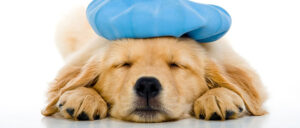
Canine influenza is a highly contagious viral infection that affects dogs and cats. Influenza viruses are able to quickly change and give rise to new strains that can infect different species. Of the two strains identified in the US, both of them can be traced to influenza strains known to infect species other than dogs. At some point, these viruses acquired the ability to infect dogs and be transmitted from dog to dog. Virtually all dogs exposed to canine influenza become infected, with approximately 80% developing clinical signs of disease. The other 20% of infected dogs that do not exhibit clinical signs of the disease can still shed the virus and spread the infection.
Canine influenza is transmitted through droplets or aerosols containing respiratory secretions from coughing, barking, and sneezing. Dogs in close contact with infected dogs in places like kennels, groomers, day care facilities, and shelters are at an increased risk of infection. Canine influenza can be spread indirectly through objects like kennels, food and water bowls, collars, and leashes or people who have been in contact with an infected dog to avoid exposing other dogs to the virus. Due to this, people in contact with an infected dog should wash their hands and clean their clothing to avoid spreading the virus. The virus can stay alive and able to infect on surfaces for up to 48 hours, on clothing for 24 hours, and on hands for 12 hours. It is important to implement cleaning and disinfection procedures to reduce the risk of disease transmission.
The majority of infected dogs exhibit the mild form of canine influenza. The most common clinical sign is a cough that persists for 10-21 days despite treatment with antibiotics and cough suppressants. Affected dogs may have a soft, moist cough, or a dry cough similar to that induced by kennel cough. Nasal and/or ocular discharge, sneezing, lethargy, and anorexia may also be observed. Many dogs developed a purulent nasal discharge and fever. Some dogs are more severely affected and exhibit clinical signs of pneumonia, such as a high-grade fever and increased respiratory rate and effort.
Canine influenza cannot be diagnosed solely by clinical symptoms like coughing, sneezing, and nasal discharge because these signs also present with other canine respiratory illnesses. Tests must be done to properly identify strains of canine influenza virus. Contact Dr. Olsen to set up a test if you think that your dog may be infected.
Treatment for canine influenza is largely supportive. Good nutrition helps dogs mount an effective immune response. Most dogs recover from canine influenza within two to three weeks. Secondary bacterial infections, pneumonia, dehydration, or other health factors may require additional diagnostics and treatments.
While canine influenza is a serious threat, vaccines are available against both strands of canine influenza found in the US. Vaccination can reduce the risk of a dog contracting canine influenza and while it may not all together prevent an infection; it may reduce the severity and duration of illness. As always, feel free to contact Dr. Olsen at 618-656-5868 with any questions or to set up an appointment!
Kennel Cough: What You Need To Know
 Doggy daycare, like regular daycare, can be a cesspool of different germs and infections. If your dog comes home from daycare with a strange cough, your dog might have contracted kennel cough. Kennel cough can be caused by a variety of different viruses and bacteria. Kennel cough is caused by a dog inhaling bacteria or viruses into their upper respiratory tract. Symptoms can be worsened if their lungs are already overworked by cold air, cigarette smoke, stress, or crowded quarters with poor ventilation.
Doggy daycare, like regular daycare, can be a cesspool of different germs and infections. If your dog comes home from daycare with a strange cough, your dog might have contracted kennel cough. Kennel cough can be caused by a variety of different viruses and bacteria. Kennel cough is caused by a dog inhaling bacteria or viruses into their upper respiratory tract. Symptoms can be worsened if their lungs are already overworked by cold air, cigarette smoke, stress, or crowded quarters with poor ventilation.
The respiratory tract is usually lined with mucus which helps trap particles that might cause infections which is why kennel cough is often caused by multiple different pathogens – one weakens the mucus in the lungs allowing the other to take root and cause infection. Kennel cough is extremely contagious and spreads around the environment where other dogs inhale the pathogen and become sick. Kennel cough is difficult to control since it is airborne. The main symptom of kennel cough is a cough that sounds like a goose honk. Some dogs will only experience coughing with kennel cough while others may have other symptoms such as sneezing, a runny nose, or eye discharge.
Severe symptoms may include retching, lethargy, and fever. Usually kennel cough lasts for three to four weeks with the worst symptoms in the first five days and dwindling over time. Young puppies and older dogs with weakened immune systems are more susceptible to kennel cough and can take up to six weeks to recover. Stress and environmental factors like temperature, dry climate, and airborne irritants like smoke can increase the severity of prevalent symptoms.
Vaccines for kennel cough are extremely important as they can reduce the odds of getting it or reduce the symptoms. While the vaccine is not 100% effective, it can greatly reduce the odds of your dog contracting the illness if they is frequently in conditions that tend to spread the disease, such as daycare. The vaccine is typically offered in oral, intranasal, and injected forms. The biggest mistake believed by some is that kennel cough is a minor issue that doesn’t call for a trip to the vet. While it may seem like a minor problem, kennel cough can lead to pneumonia or death, especially in dogs that already have weakened immune system.
It’s better to be safe than sorry and take your dog to the vet at the first signs of kennel cough, rather than waiting for the issue to progress. Your vet will be able to tell you how severe of a treatment needed to help your pets kennel cough. A mild cough may only need rest and a cough suppressant while severe kennel cough may require antibiotics or supportive care. Coughing is not only indicative of kennel cough; it may also indicate major health issues such as a collapsing trachea, canine distemper, canine influenza, bronchitis, asthma, or even heart disease. It is always best to err on the side of caution and bring your dog to the vet at any sign of coughing.
There are several home remedies that may help soothe your pet’s symptoms and reduce discomfort. Create a humid environment by using a humidifier or turning on a hot shower and putting your dog in the bathroom with the steam. Some dog owners have found that a small amount of honey daily can help a dog’s throat. Honey has natural antimicrobial and anti fungal agents that can reduce inflammation and soothe sore throats. Thus, reducing coughing while helping your pup fight off infection. Simply give your dog a spoonful of raw honey a few times a day. As always, be sure to check with your vet before introducing human food into your dog’s diet. Another option to consider is CBD oil. It is natural found in hemp plants and highly regarded for its health benefits. The anti-inflammatory properties of CBD oil can ease pain and swelling, restoring comfort.
Kennel cough is not a common cold. It is best to visit your veterinarian right away to learn of the best treatment path. As always, feel free to contact Dr. Olsen at 618-656-5868 with any questions or to set up an appointment.
Dr. Olsen’s Breed Spotlight: The Lowchen
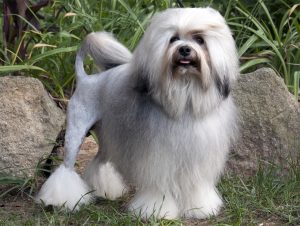 The month of February is reserved to spotlight a dog breed. Most of the time, I try to shed some light on a breed that isn’t very popular. Well this month is no exception as I am featuring a dog that is not very popular, unique in its appearance, rich in history and really considers its only job as being a companion for its owner. That breed is the Lowchen, which is also known as the “Little Lion Dog”.
The month of February is reserved to spotlight a dog breed. Most of the time, I try to shed some light on a breed that isn’t very popular. Well this month is no exception as I am featuring a dog that is not very popular, unique in its appearance, rich in history and really considers its only job as being a companion for its owner. That breed is the Lowchen, which is also known as the “Little Lion Dog”.
The Lowchen is a small breed that generally stands about a foot tall but has an enormous heart. The coat is traditionally kept in a “lion clip” in which most of the hind quarters and tail are clipped down close to the skin. The overall effect is that of a mini lion with a full mane and plumed tail. This breed coat comes in many colors and color combinations.
The breed has a long and somewhat controversial history. We know from works of art depicting images of small dogs in a very distinctive lion trim from the breed dated to the 16thcentury. The breed has been depicted throughout the centuries in paintings, drawings and tapestries from around the world.
The controversy arises as to the exact origin of the breed. There are several theories of debate with one thinking that the breed originated in Northern Europe which is now known as Germany, France and Belgium. Because it came from this area, the Lowchen is thought to be tied to the breeds that were the forerunner to the modern day poodle. The stories go that they were a favorite companion for the ladies of the castles and they would lay close to their owners at night to keep them warm like a water bottle, as well as attract the fleas away from the owner.
Another theory is that the Lowchen originated in the Mediterranean region and are directly related to the Bichon breeds. Also there are some theories that the breed might have originated in Russia or Tibet.
The Lowchen has been a resident of all households through the ages, from castles to farmyards and cottages. Aside from the function of being a companion, they possibly were varmint hunters and fierce little guards.
There is a story from the late 1700’s about a Lowchen whose name was Bijou. As the story goes, Bijou was so upset that his owner was leaving him behind, he jumped out of a castle window into the Lahn River that was 60 feet below. One ending has him surviving and was rewarded by riding to the hunt in the owner’s saddle, the other that the jump ended in disaster. Whichever the outcome, his portrait from 1787 still hangs in the Baronesses’ bedroom in Wellburg Castle.
Little has been written about this breeds early years. The first record of a breeder and fancier was Dr. Walthier in Germany in the 1800’s. The breed standard was written in the 1800’s and in 1897, a Madame Madelaine Bennert purchased her first Lowchen. She is the one who would be recognized for her efforts in saving the disappearing breed.
In 1999, the Lowchen was admitted into the AKC in the Non-Sporting group. The Lowchen is a small breed that weighs about 15 pounds and has a life expectancy or about 13-15 years. It is a very loving dog whose sole purpose is giving love and hoping to get loved in return. It might see a squirrel, chase it and catch it, but it would not know what to do with it if it did catch it. It will bark at strangers, but then when they enter, the Lowchen will lick them to death. The Lowchen’s favorite spot to be is on the couch watching out the window.
Don’t mistake the breeds sweetness, because it is a true lion that will stand up to any German Shepherd and bark down a Great Dane. They are active, smart, and love children. They can make very good agility dogs because they are trainable, resourceful and very adaptable. Since they like to bark, it is recommended that they undergo some obedience training. Due to their haircoat it is advisable that they be brushed regularly and see an experienced groomer monthly. Another plus with this breed is that they are hypoallergenic.
There are very few health problems with this breed. But they may suffer from patellar luxations, heart issues and some eye issues.
Here at the Olsen Veterinary Clinic, we love to see all breeds. So if you have a Lowchen, or a mixed breed, gives us a call at (618)-656-5868 and we will be happy to assist you.
Dr. Olsen’s Breed Spotlight: Pixie-Bob Cat
 Dogs are considered “man’s best friend.” But what do you get when you don’t have room or time for a dog? How about a cat that thinks it’s a dog? The breed of cat that I am spotlighting this month has been described as that. It is called the Pixie-Bob.
Dogs are considered “man’s best friend.” But what do you get when you don’t have room or time for a dog? How about a cat that thinks it’s a dog? The breed of cat that I am spotlighting this month has been described as that. It is called the Pixie-Bob.
The Pixie-Bob breed is thought to be the result of the natural mating between a bobcat and a domestic shorthair, but they may also have sprung from a natural genetic mutation that gave them their wild look and bobbed tail. It is one of those mysteries that no one will ever know for sure. This breed was first developed in the Pacific Northwest in the mid 1980’s by a woman that acquired a male kitten with distinctive characteristics like a spotted coat, a short tail and more than usual numbers of toes. A year later, she acquired another male cat with a short tail and with the help of a neighbor’s female cat, produced a litter of kittens. One, a female, had a muted spotted pattern and the woman kept her—naming her Pixie. The breeder wanted more cats like Pixie, and soon the breed was born. They were recognized as an actual breed by the American Cat Fanciers Association in 2005.
Pixie-Bobs are described as “big, lively and outgoing.” The breeds’ devotion to its family belies its somewhat wild look. They tend to be a large cat where the male and female can weigh up to 12 and 25 pounds respectively. They are brawny and muscular which is why some breeders believe that the Coastal Red Bobcat had to be the founding father. Their ears tend to be tufted and resemble that of a bobcat by having lynx tips on the ears. Pixie-Bobs have a thick wooly coat like a bobcat and can be either long or short haired. They normally have a striped coat pattern and come in a variety of colors, but most are tawny, light gray, or reddish. Their eye color can be from golden brown to gooseberry green. A Pixie-Bob’s tail is a minimum of 2 inches by can be as long as to their hock. Their facial hair grows downward giving them the appearance of a man’s muttonchop sideburns. One other unique feature that some Pixie-Bobs have are that some are polydactyl. This means that they have more than the usual number of digits on its paws. Polydactyl cats are considered lucky, so if you own a Pixie-Bob, luck may be on your side.
Pixie-Bobs are inquisitive and like to interact with families, so they are true companions and members of the family because of their relaxed attitude. They communicate with their families with a pleasant voice and standard meows and purrs. They are active and enjoy being friends. They enjoy interaction with families and have been described by some as “the cat that thinks it is a dog.” Pixie-Bobs love going on car rides and walks just like dogs. They also get along well with dogs and other pets. Because they tend to be a medium to long haired breed, they do require a weekly brushing to prevent mattes from forming and regular nail trims.
If you have a Pixie-Bob cat or even a good ol’ domestic shorthair, the Olsen Veterinary Clinic tries to meet the expectations for all of your pet’s needs. If you have any questions or issues please do not hesitate to call us at (618)-656-5868.
Dog Park Safety Tips
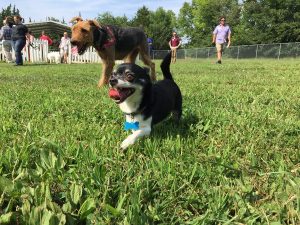 With the pet business becoming a multi-billion dollar business in recent years, it is telling us that more and more people have pets and are taking care of them. Among the fads, if you want to call it that, are “doggy daycares”, mobile groomers and dog parks. A lot of these services are great ideas as far as convenience is concerned, but how safe are they to our pets? Especially the dog parks.
With the pet business becoming a multi-billion dollar business in recent years, it is telling us that more and more people have pets and are taking care of them. Among the fads, if you want to call it that, are “doggy daycares”, mobile groomers and dog parks. A lot of these services are great ideas as far as convenience is concerned, but how safe are they to our pets? Especially the dog parks.
No, I am not going around and saying that dog parks are bad for you dog, but there could be some hidden dangers that may be lurking for the unprotected dog. Most dog parks are public places, so there is a good possibility that not all dogs are properly vaccinated against diseases such as Parvovirus, Roundworms, or even Kennel Cough. These diseases can occur during direct contact with another dog, or even if your pet has licked an area that harbored the diseases or parasites. So my advice is to make sure that your pet is currently vaccinated for all diseases. If they’re not—do not take them there. It is not worth it to possibly expose your pets to those diseases if you can help it.
We all see the dogs being playful in the park, but how do we know that the other pets can’t become overly aggressive? Because of this, I would recommend that your pet be kept on its leash. I know that is not the reason for dog parks, but that way you can control your pet if they or another pet exhibits some aggression so that you may prevent injury and not be faced with a costly veterinary visit.
If you allow your pets to run free in the park, injuries such as torn cruciates and other lamenesses can occur. To reduce this possibility, it might help to train your pets for the rigors that a dog park presents.
Dog parks are popping up in a lot of the communities. Realize that just because they are in a fenced in environment, they are not always completely safe. If you have any questions or issues, please feel free to contact us or give us a call at 618-656-5868.
Everything You Ever Wanted To Know About Pet Vaccines
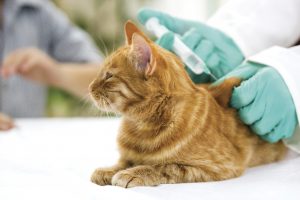 Pet vaccines are important, and they have a long history. Probably the most important technological gains were discovered in the 1790’s by Dr. Edward Jenner. He discovered the first vaccination by giving people a preparation of material from cowpox, which was a common animal disease in cattle. The people that were injected with or “vaccinated” with the material did not get sick and remained healthy when they were exposed to the deadly smallpox virus. Over 100 years later, a French scientist by the name of Louis Pastuer, found that they could protect people and animals from disease by injecting altered forms of microorganisms.
Pet vaccines are important, and they have a long history. Probably the most important technological gains were discovered in the 1790’s by Dr. Edward Jenner. He discovered the first vaccination by giving people a preparation of material from cowpox, which was a common animal disease in cattle. The people that were injected with or “vaccinated” with the material did not get sick and remained healthy when they were exposed to the deadly smallpox virus. Over 100 years later, a French scientist by the name of Louis Pastuer, found that they could protect people and animals from disease by injecting altered forms of microorganisms.
The process of how a vaccine works is a complex reaction that involves many chemical and cellular reactions within and between the immune system cells of the body. Basically the role of the vaccine is to expose the immune system of the pet to viral and bacterial antigens that are contained in the vaccine. In the future, when the pet is exposed to that related organism, the body will recognize it and then activate the immune system to prevent the disease from producing or reducing the signs of clinical disease.
Vaccines can be administered by subcutaneous or intramuscular injections, intranasal or orally. The vaccines that are injected or given orally tend to produce a more systemic or whole body response, whereas the intranasal provides a more local response. Intranasal vaccines can be advantageous to provide a quicker response and prevent or kill the new virus before it can get any further in the body. Local nasal vaccines would not be helpful for a virus that has been ingested and causes intestinal disease such as parvovirus in dogs. For that we would want a vaccine that would produce a more systemic response.
The vaccines that we use in veterinary medicine are most generally either a killed or a modified live (attenuated) vaccine. There are multiple indications for both, but generally speaking the killed vaccines are safer and unlikely to cause disease in the immunocompromised pet. Whereas, the live vaccines provide a more amplified response that leads to a better, longer lasting immune protection. Several of the vaccines that we use have many different viruses in one injection. This allows to vaccinate for several of the organisms in one injection.
To confuse you even more, pets get some protection through the placenta when the puppies and kittens are in the mother’s uterus and when they get colostrum which is the first milk that they drink. This protection will decrease over time and usually will be low enough by 12 weeks of age where vaccinations will start reacting. There is no way to measure quick, easy and inexpensive way to measure the immunity gained here, so we generally recommend starting vaccines at 6 to 8 weeks of age and then booster them every 2 to 4 weeks until they are 16 weeks of age. Generally, it is not the number of vaccinations that they get, but when they get them at their chronological age.
A vaccine helps prime an animal against a specific disease. It does this by stimulating the immune system with a nonpathogenic virus or bacteria. If the animal responds adequately, it will develop cells that will help it to quickly and efficiently fight off the pathogenic form of the agent if it is encountered later. Here at Olsen Veterinary Clinic, we have tailored our vaccination programs to meet the needs of your pet. If you have any questions please feel free to contact us here, or call our office at 618-656-5868.
